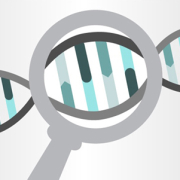Endotoxin test is an important in vitro diagnostic test for
identifying the presence of endotoxin from Gram-negative bacteria. It is a
synthetic, noninvasive laboratory assay intended for point-of-care use. The
test can detect levels of endotoxin ranging from 0.5 to 2,000 EU/mL of
bacterial culture supernatant. The test also measures the endosmotobacterium
that produce endotoxin.
The test is based on the observation that bacteria produce
multiple endproducts, including a lethal toxin (lipopolysaccharide) and a
metabolite (endo-biotin), which has a longer half-life than the toxin and is
more precisely measured with this test. This metabolite, endo-biotin, is not
produced by all Gram-negative bacteria but only those that have an outer
membrane containing lipid A.
Why is it important to have Endotoxin test
1. Damage due to endotoxin
Endotoxin is a major cause of severe illness and death. Even
low levels of endotoxin contribute to inflammatory responses, organ failure,
acute respiratory distress syndrome (ARDS), tissue necrosis, disseminated
intravascular coagulation, multiple-organ failure (MOF), multi-organ system
failure (MODS), shock and rapid death of the patient.
2. Cause of endotoxic shock leading to multiple organ
failures (MOF)
A normal response to an infection occurs when endotoxin
activates the innate immune system. This response is crucial to stopping the
infection, but at the same time it causes damage to host tissue, which becomes
MOF.
3. Risk factors of Endotoxic shock:
Endotoxin can cause MOF in both healthy and immunologically
compromised individuals. Risk factors include advanced age, liver or kidney
disease, malnutrition, cancer, AIDS and diabetes. The mechanisms of MOF are
complex, and include activation of the complement system, fos-related antigen-1
(FRA-1) expression and monocyte/macrophage activation; endotoxin also increases
coagulation factor VI.
4. Continuous use of antibiotics leads to decreased levels
of antibodies against bacteria
Antibodies are important in protecting us from disease. Once
the immunity fades through continuous use of antibiotics, the bacteria have
easy access to that tissue and cells become easily infected with endotoxins
leading to wide spread damage. This can be dangerous especially in patients who
are already compromised by infection or other conditions such as cancer or
diabetes, who show increased risk for endotoxin related diseases.
5. Endotoxin test can be used to guide continued antibiotic
therapy
Antibiotic therapy is the most common treatment for
bacterial infections, however, being able to identify early infection and
appropriately adjust antibiotic therapy can lead to fewer side effects. This
test is a step used to determine if an infected patient needs antibiotic
treatment versus a placebo.
In conclusion, Endotoxin test is an important tool to assess
how well an antibiotic therapy is helping with treatment of bacterial infections.


